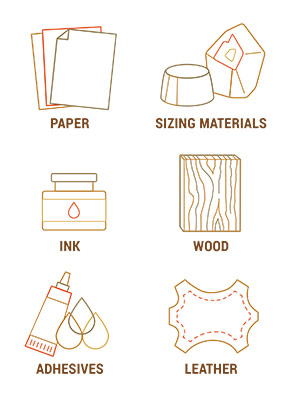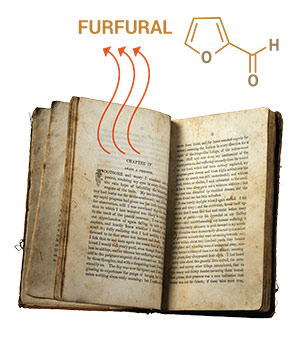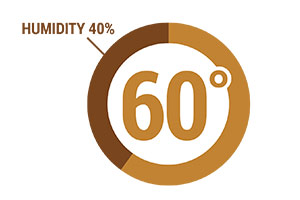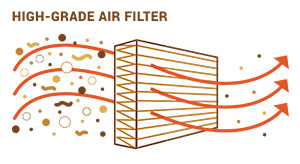Preserving Pepperdine
For decades Pepperdine has collected and shared rare books, documents that capture Malibu and University history, film and television materials, and archives of the Restoration Movement
In fall 2016 the National Endowment for the Humanities awarded Pepperdine with a $700,000 grant to renovate the spaces used to store these priceless materials, including the development of a sustainable temperature and humidity-controlled preservation environment inside Payson Library.
Learn about the common environmental threats to historical materials and how Pepperdine preserves its prized collection of rare cultural heritage items.
The Chemistry of Deterioration
The elements of a book that may react in different ways to the environment:

The Smell of Old Books
Paper’s Degradation Into Volatile Components
The volatile substance furfural is a characteristic emission from older books lending an aroma of almonds or baking bread. Furfural arises from the decomposition of cellulose and lignin, two substances found in paper.

Factors in Deterioration
Temperature and Humidity

These photographs were once stored in a garage in a desert area, where extended exposure to low humidity caused them to curl. Pepperdine re-flattened these photos through hydration.
To flatten photographs without incurring the risk of cracking them, a conservator will slowly introduce them to humidity by placing them in a humidity chamber. As the humidity softens the photographs, the conservator flattens them under pressure and dries them in a flattened position.
SOLUTION
Pepperdine’s new custom-built HVAC unit maintains a temperature of 60 degrees Fahrenheit and a 40 percent relative humidity level within collection storage areas. Special monitors record temperature and humidity readings every five minutes. This controlled environment has already more than doubled the usable life of the stored collections.

Air Pollutants

Silver mirroring, a phenomenon in which oxidation- reduction caused by pollution results in a silver glow, has obscured parts of this photo.
SOLUTION
Payson Library now features high-grade air filters in the HVAC system that almost entirely remove even the tiniest particles, such as pollen, smoke, mold spores, and dust. All products and finishes inside the preservation spaces, including flooring, paints, and shelving, were evaluated both for their preservation qualities and environmental sustainability.


Light

Fading is one of the most significant and visible effects of damage. All light can damage materials, but shorter wavelengths increase the potential for damage.
SOLUTION
All newly installed light bulbs at Payson Library are LEDs, most of which do not emit UV or IR wavelengths. Motion sensors have also been installed so that lights turn off automatically when no one is present in the storage spaces.
LED light bulbs are not only ideal for collection preservation, but they are also quite energy efficient. One LED light bulb might last 25,000 hours, while a fluorescent light bulb emitting the same light would last 8,000 hours, and an incandescent would last 1,000 hours. This equals energy and cost savings.

